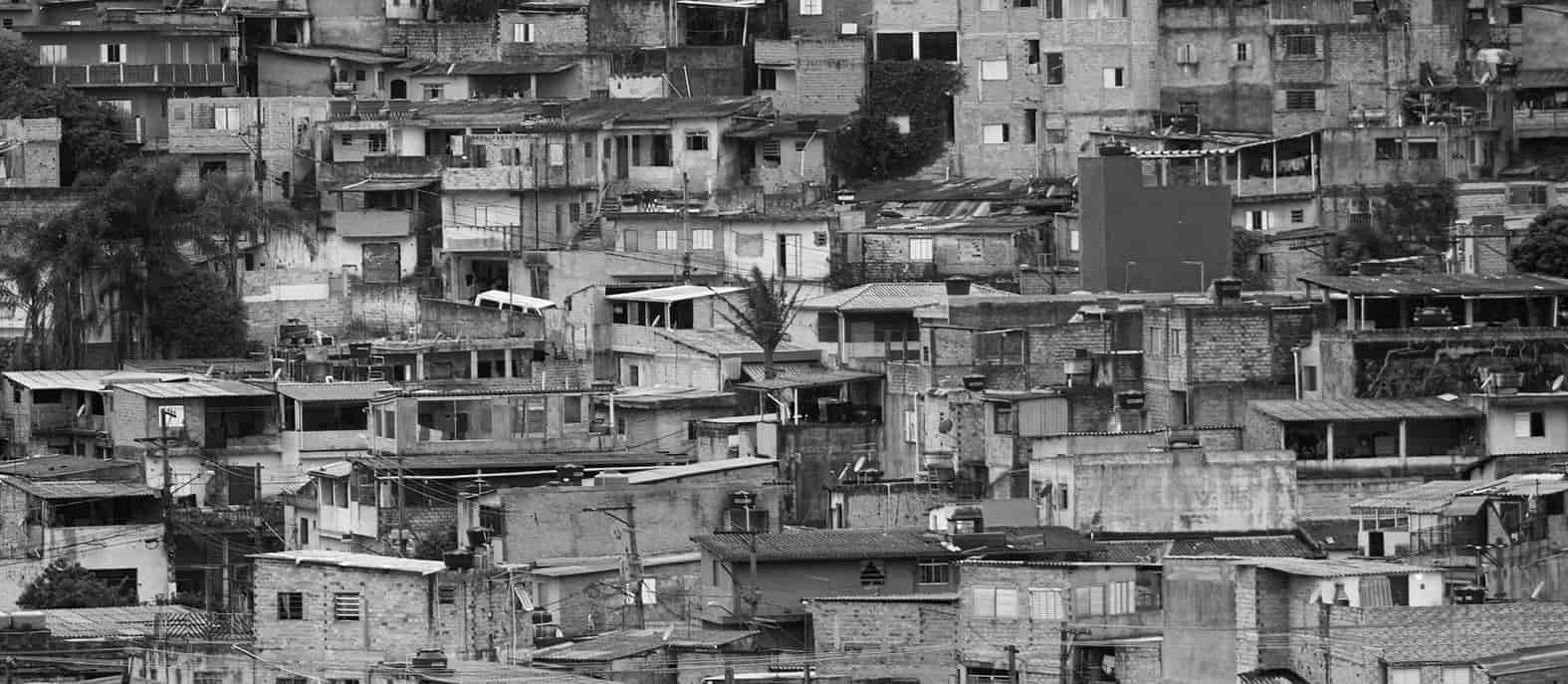Throughout history, the world’s population has been relatively small, numbering in the millions. Only by the middle of the 19th century, the population of the Earth reached 1 billion people.
Since then, the number of people began to grow rapidly and by 1974 reached 4 billion. And the population will reach somewhere near 8.5 billion by 2030, 9.7 billion in 2050, 10.4 billion in the 2080s, and remain at that level until 2100. This period is called a population explosion, associating it with an improvement in the quality of life and the development of medicine.
The global population growth will reach about 80 million annually (and according to the latest data – even faster). According to forecasts, the population will reach the mark of 8 billion around 2025. And by the end of this century, the world’s population will be about 14 billion if current growth rates continue.
Theoretically, the planet will be able to endure it, but how serious the consequences await us is unknown. However, nothing good can be expected since the overpopulation of the planet is already causing enormous damage to the environment and threatening catastrophes now. So why is overpopulation a problem for the environment?
What Is Overpopulation?

Overpopulation or overcrowding is a phenomenon that occurs when a high population density causes environmental degradation, reduced quality of life, or famine and conflict. Typically, this term refers to the relationship between the human population and the environment. However, it can also be applied to any other species that reach critical levels in their population.
Overpopulation is a global environmental problem. Overpopulation has been observed on our planet for several decades, and the number of people only continues to increase.
What Is a Population Explosion?
The modern population explosion began in the 50s of the last century and, according to many scientists and sociologists, will continue for at least another two decades. This is due to the preservation and growth of the birth rates and the artificial decrease in the death rates.
The main feature of the population explosion is that in developed countries, rapid population growth is due to socio-economic factors and the need to fill new jobs, while in developing countries, the picture is the opposite. Population growth there outstrips economic development, exacerbating the problems of employment, ecology, and food.
What Are The Causes Of Overpopulation
The main reasons for the increase in the global population are an increase in the birth rate and a decrease in mortality. They are largely based on the achievements of modern science and medicine, but an important role is also played by the lack of access to education in many countries, and the religious and socio-cultural characteristics of the population.
Therefore, overpopulation is a rather arbitrary concept and depends on a particular region.
Religious Features
Most of the religions that exist on the planet have a categorically negative attitude not only to abortion but also to the use of contraceptives. For example, in some religions, it is believed that only the highest spiritual entity has the ability to grant and take life, and a person does not have the right to decide this for her.
Also, some religions infringe on women’s rights, as a result of which they remain powerless “incubators” whose task is to stay at home, give birth, and raise children.
Social And Cultural Features
In addition to religious beliefs in relation to the artificial regulation of the global population, many countries have anthropocentric views based on cultural characteristics.
On the territory of many countries, many still have a negative attitude towards contraceptives and abortions, promoting the ideas of “pro-life” and the rejection of abortions to the masses, even if pregnancy is undesirable for a woman. Thus, by persuading women to give birth and, putting pressure on them, manipulating guilt, society increases the world population.
The low level of education makes it impossible to realistically assess the possibilities and needs of the family, women, and children, to carry out family planning, which increases the number of not only people in general but also low-income families. And those, in turn, without proper education and sometimes the ability (and desire) to purchase contraceptives, continue to give birth. The cycle closes.
Decrease In Mortality
The problem is typical for developed countries, where medical provision allows people to live for many years, saving people who were previously considered hopelessly ill. It also increases the survival rate among premature newborns, who would have died naturally under the same conditions. The falling mortality rate is another reason for the growing Earth’s population.
Wars, Catastrophes, Disasters
Countries and areas of the world with a constant burden of war and disease (such as AIDS), contrary to popular belief, do not experience smaller population growth in the long term. This is because parents, and siblings in a family that has experienced the death of relatives suffer from a kind of post-traumatic stress (the syndrome of losing family members) and, to compensate for it, have “extra” babies.
For example, in most countries in sub-Saharan Africa, it is customary for families to have 5-7 or more kids(despite the fact that the unemployment rate there exceeds 50%). These “extra” babies and ongoing disasters create a vicious cycle that is only rarely broken.
The cycle gets worse over the generations, and disasters, wars, or diseases only produce a multiplier effect.
For example, the AIDS crisis in Africa, which has claimed the lives of some 30 million people to date, has resulted in international funds being channeled only to the fight against HIV and not to family planning and fertility reduction programs.
As a result of the population explosion in Africa, since 1990 the population of this continent has increased from 600 million to more than 1030 million people today; the specific area of agricultural land per person decreased by more than 30%.
Lack Of Education
The more educated a person is, the more consciously they approach, including family planning. The fertility rates in developing nations with a high level of education are lower than in less developed nations.
Families in such countries are in no hurry to have children, and they rely on their wealth, strive to secure a decent life for themselves, and, most often, have one child. So, often, the average family size is small, and they have access to education, contraception, and a conscious approach to resource consumption.
People in countries with poor populations without access to education are forced to create large families. They have many more children because there is no access to contraception or knowledge about it. Together it is easier for them to survive in difficult weather conditions, work, and get food.
For example, according to statistics, 76% of British women between the ages of 16 and 49 use at least one type of contraception, leaving 25% vulnerable to unplanned pregnancies. However, according to a World Health Organization (WHO) study, this percentage reduced to 43% in underdeveloped countries, which raises the birth rate.
Why The Human Overpopulation Is A Problem
Humankind’s global impact on the planet is influenced by many factors other than population. For example, lifestyle (including resource use) and pollution (including carbon footprint) are equally important. In 2008, The New York Times stated that people in the developed world consume resources such as oil and metals at a rate nearly 32 times higher than in developing countries, which make up the majority of the population.
Despite the fact that the planet generally can accommodate a much larger number of people, the problem lies in the strong anthropogenic influence. Nature does not have time to recover from the active use of its resources, and as a result, they are quickly depleted, leading to conflicts and environmental crises.
There are several main reasons why human overpopulation is a problem.
Lack Of Drinking Water
Water resources experience one of the highest anthropogenic pressures. Yet, clean, fresh water is one of the main resources necessary for the survival and full health of not only humans but also many living beings.
Despite water purification measures, the planet’s major water arteries are often polluted with industrial and agricultural waste. Hot regions are practically devoid of water at all.
With further population growth and anthropogenic pressure, humanity risks being involved in the struggle for clean water.
Environmental Damage
Overpopulation causes great harm to the environment, including global warming, depletion of natural resources, pollution caused by the industrial revolution, active mining, climate change, rapid reduction in the number of vital resources, and many other environmental problems, such as:
- Depletion of natural resources, especially fossil fuels like oil, natural gas, and others.
- Increasing world energy consumption and its forecasts.
- Increasing levels of air pollution, water pollution, soil pollution, and noise. When a country becomes industrialized and enriched, the combination of government regulation and technological innovation causes pollution to decrease substantially, even as the population continues to grow.
- Deforestation and loss of ecosystems, greatly contribute to the overall balance of atmospheric oxygen and carbon dioxide. About eight million hectares of forest are lost every year.
- Changes in the composition of the atmosphere and subsequent global warming. Human activities are changing global temperatures.
- Loss of arable land and increased desertification.
- Mass expulsions and biodiversity reduction of reduced rainforest habitat due to slash and burn practices sometimes practiced by migrant farmers, especially in countries with rapid rural population expansion.
- Decreased biodiversity as a result of urbanization. With the growth of human cities and settlements, as well as due to farming practices and intensive farming for food production, many animals are losing their natural habitats.
Declining Standard Of Living
Due to limited resources and their constant reduction, including drinking water, clean air, and depletion of the Earth’s resources, the lives of people around the world will inevitably become worse.
What exactly to expect in the near future:
- High infant and child mortality. And a lower life expectancy in general.
- Intensive industrial cultivation to support large populations results in threats to humans, including the evolution and spread of antibiotic-resistant bacterial diseases, excessive air and water pollution, and new viruses that infect humans.
- More likelihood of new epidemics and pandemics. For many environmental and social reasons, which include conditions of overcrowding, malnutrition, and inadequate, inaccessible or non-existent health care, the poor are more likely to be exposed to infectious diseases.
- Starvation, malnutrition, or malnutrition with health problems and nutritional deficiencies (such as rickets).
- Unhygienic living conditions for many people are based on the depletion of water resources, the discharge of raw sewage, and the disposal of solid waste.
- Conflict over scarce resources and overpopulation led to an increase in the level of war.
What Can Be Done With Overpopulation Problems

Some solutions to overpopulation have already been taken in a number of states, but new solutions are also needed. Reforms must be introduced to weaken the impact of outdated family values and to increase the priority of education and careers. In most countries of the world, the number of early marriages and large families is declining.
A striking example of restrictive state policy and birth control is in China, where families are forced to pay a fine for having a second child. In India, forced sterilization of the population was carried out. The policy of family planning and the reduction of the birth rate through economic progress must be actively promoted.
There are several main ways:
- increasing the level of literacy of the global population;
- reduction of moral pressure from society and traditions;
- declining religious influence;
- the rational approach to the use of natural resources;
- an active family planning policy.
Bottom Line
According to the most optimistic conclusions, by the end of the current century, by 2100, the population of the Earth will reach 11-14 billion people and will stabilize. Probably, those countries that have environmental problems will worsen, and resources will become insufficient, but at the same time, humanity will make a leap forward in technological development, thanks to which it will be able to ensure the existence of such a huge population and level out some problems. This is the most positive scenario.
According to the most pessimistic conclusions, humanity is waiting for a collapse caused by an excess population, a lack of resources, natural disasters, wars, and other problems. As a result of all this, serious damage to nature is predicted, and a reduction in the number of people to 1-3 billion. This is the most negative scenario, but even he does not predict the death of all mankind, which is good.
But be that as it may, we must make efforts so that, despite technological advancement, the Earth’s surface can withstand future generations.
Population control is needed at this point in our history, as population numbers are growing, demand for more food and other resources, and the climate changes. Overpopulation is one of the biggest challenges that modern humanity has faced.
